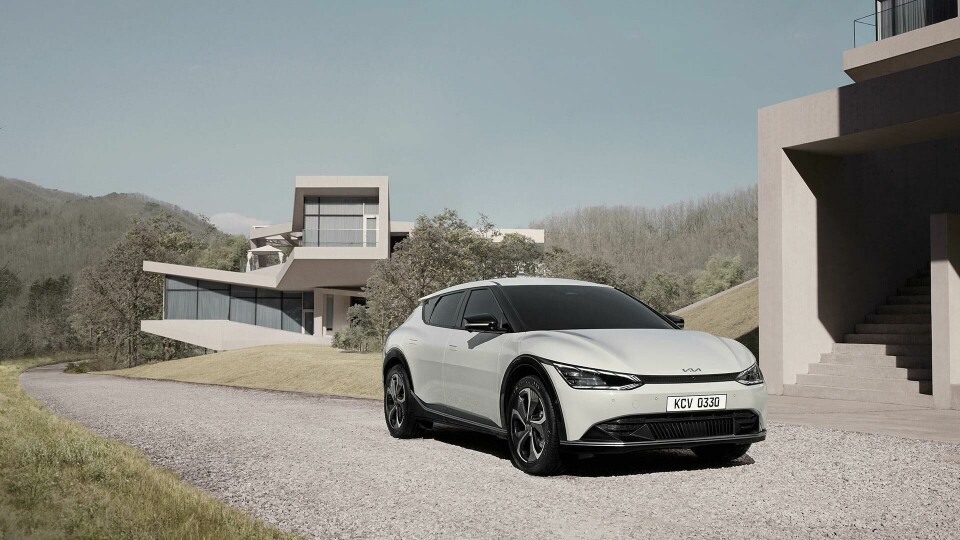
First Sight: Kia EV6 unveiled as Habib outlines new design strategy
Kia’s EV6 suggests a softer, more subtle interpretation of its current design language. Senior design VP Karim Habib, however, wants to focus on concepts rather than style
Before Kia’s answer to the full-electric Hyundai Ioniq 5 – the EV6 – broke cover late on Sunday 14th March 2021 (23:00 GMT), Car Design News had an early chat with senior design VP Karim Habib about the stylish ‘two-box’ EV and what’s next. Spoiler alert: It could include MPV-like ‘mono-volume’ vehicles again…
Kia’s PRs remains tight-lipped about the EV6’s exact dimensions but judging by early pictures and because we know it’s based on the same dedicated new electric car architecture as the Ioniq 5 (dubbed E-GMP) it will likely have a similarly long 3000mm wheelbase as the new Hyundai. An inside source suggested the EV6 will probably be a little longer overall than the 4635mm-long Ioniq 5 too.
The EV6’s exterior design aesthetic is certainly different and much softer than the angular Ioniq 5’s. Arguably its most distinctive feature is the metallic twin stripe sill detail that rises diagonally up through the rear wheel arch to then turn red to form a full-width rear light signature. A much more subtle interpretation of Kia’s existing ‘tiger nose’ grille resides at the front and the sides sport flush-looking door handles and glazing plus large 20-inch wheels to offset the long wheelbase and taller roof – probably in the region of 1600mm high.
The spacious flat-floored cabin is also striking and restrained, with one large, curved screen dominating the dash. Starting from behind the steering wheel it stretches right across to the central infotainment area. Toggle switches still feature on the steering wheel hub though, as do physical aircon and volume controls below the main touchscreen. According to Habib, this dual approach is likely to stay in future vehicles, as he explained at the recent virtual press roundtable event Car Design News attended. “Screens allow the user to individualise their experience,” he says, “but in the future the key will be a healthy balance between what you access directly and what you need to push into the background until you need it. So, I think it’s both – screens and hard buttons.”
The former BMW veteran – who also had brief stints at Mercedes and most recently Infiniti – only arrived at Kia in late 2019 so had little input on the EV6 but has already outlined his new ‘Opposites United’ design vision with five further ‘brand pillars’ beneath that which are, in our opinion, too vague, broad and long to repeat here. Perhaps Habib’s explanation of the main principle is more instructive. “We chose the word ‘opposition’ carefully,” he says, “as we’re living in a time that is very challenging and has brought to the surface these contradictions and values throughout the world. These ideas need to cross-pollinate more as that’s enriching. We could have had five or ten pillars, it’s really a way to give freedom to our designers under one principle, to think about how they want to do it. We don’t really want to describe a style; we want to talk about a concept.”
At the end of the chat, Habib also hinted that he would be pushing for more than an endless series of crossovers and SUVs in his tenure at the brand. “Maybe it’s taste or cyclical evolution, but I’m positive the world that has integrated SUVs as the norm will welcome more mono-volumes too,” he says. “I think it’s just a smart concept and I hope we’ll have more. They can be fun, versatile, innovative, unusual and inventive, so I do hope with the flexibility that this architecture offers, we’re able to experiment in more than one typology.”









